If you’re tired of using harsh chemicals only to find pests still damaging your plants, you’re likely seeking a safer, more natural solution. Understanding the struggle to maintain a thriving garden without compromising safety and environmental health is crucial. Fortunately, this guide introduces beneficial nematodes for effective pest management so you can better handle caring for your food oasis!
Beneficial nematodes are microscopic roundworms which act as an eco-friendly pest control for gardens. They target soil-dwelling pests, improving plant health without harming beneficial insects. Easy to apply, they offer long-term pest management.

As you continue reading, you’ll discover a range of beneficial nematodes, each suited for different pest problems. We’ll outline how these nematodes work, their target pests, and the best ways to apply them.
Humble Highlights
- Discover the importance of nematodes in your garden and how these invisible friends help you grow healthier plants and target the specific pests invading your green space so you can boost growth and enjoy superior harvests.
- Save time with this done-for-you chart that matches the type of beneficial nematode to the correct pest damaging your plants AND uncover why soil temperature and moisture are crucial so you can deploy these garden helpers under the right conditions and work hard on your behalf!
- Uncover when the best time to apply nematodes for maximum effectiveness AND discover these 5 popular nematode species that help target and eliminate many common pests that affect backyard gardens so you can develop mind-blowing crops consistently.
What Are Beneficial Nematodes And How Do They Work
The Lifecycle And Function Of Entomopathogenic Nematodes
Different from regular soil earthworms, beneficial nematodes, or entomopathogenic or insecticidal nematodes, are microscopic roundworms that act as natural insect pest control agents in the soil. Their effectiveness relies on their remarkable life cycle, which not only helps control existing pest populations but also suppresses future outbreaks.
Although these unique garden critters don’t often affect earthworms, entomopathogenic nematodes target a wide range of soil-dwelling pests, offering a versatile tool in the gardener’s arsenal against insects. Their infective juvenile stage enters insect hosts through natural openings or burrowing through the insect cuticle. 1
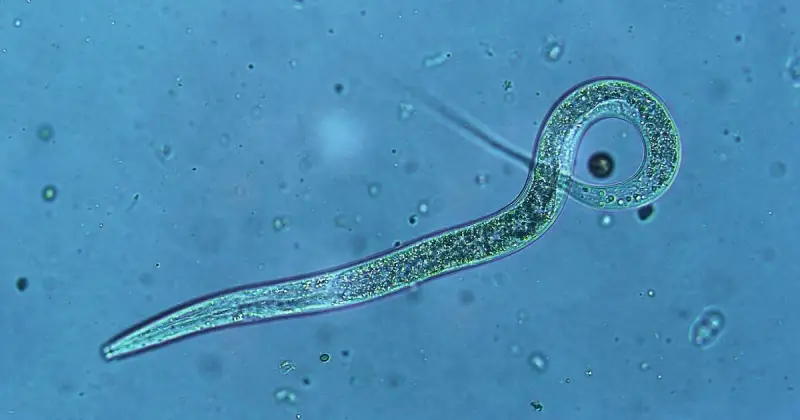
Once juvenile nematodes enter the insect host, they release symbiotic bacteria that kill the host within a few days by septicemia. Subsequently, the nematodes feed on the bacteria and insect tissues, multiply, and emerge from the dead insect cadaver as a new generation of infective juveniles to seek new hosts.
This process is nature’s way of ensuring that beneficial nematodes can thrive and multiply, securing their place as a sustainable solution for pest control. The life cycle of beneficial nematodes allows them to naturally integrate into the garden ecosystem, providing long-term pest management solutions.
Beneficial Nematodes vs. Pest Population: The Natural Battle
In the soil environment, beneficial nematodes constantly fight against insect pest populations such as grubs and Japanese beetles. While highly infectious to their target pests, they are entirely harmless to plants, animals, humans, and non-target organisms like earthworms, making them an exceptionally safe biocontrol tool.
The natural war between nematodes and insect pests exemplifies a balanced pest management approach. Beneficial nematodes reduce the number of harmful pests, minimizing damage to plants without harsh chemical pesticides.
Their selective targeting ensures that beneficial insects remain unharmed, promoting a healthier ecosystem and maintaining the garden’s biodiversity, which helps to create a thriving and healthy garden.

Understanding The Types of Beneficial Nematodes And Their Target Pests
There are over thirty (30) species of beneficial nematodes, eight (8) of which are commercially available worldwide and seven (7) currently marketed in the United States. Not all nematodes are created equal. Various beneficial nematodes targeting specific pests allow gardeners to tailor their pest control efforts.
For instance, certain nematodes are more effective against soil-dwelling pests like white grubs and fungus gnat larvae, whereas others may target above-ground pests. By understanding the specific habits and life cycle of these pests, gardeners can strategically introduce nematodes likely to yield the best results in their battle against garden invaders.
Knowing which type of beneficial nematode to use against a particular pest is crucial. For example, Steinernema feltiae nematodes are renowned for their efficacy against fungus gnats and other pests that inhabit the soil’s surface layers. Meanwhile, Heterorhabditis bacteriophora targets deeper-dwelling pests, such as white grubs and Japanese beetles.
Matching the correct type of beneficial nematode to the target pest ensures a highly effective approach to pest control. This reduces the need for chemical interventions and fosters a more resilient garden ecosystem.
Choosing The Right Beneficial Nematodes For Your Needs
Matching Nematode Species To Specific Garden Pests
The key to successful pest management using nematodes is selecting suitable species to combat the specific pests afflicting your garden. Each species of nematode has evolved to target specific types of pests, making it crucial to understand the pest population in your yard before making a choice. 2
The selection process involves identifying the most problematic pests and selecting nematodes known for their effectiveness against those particular pests. This tailored approach maximizes the nematodes’ efficacy and ensures the health and balance of the ecosystem.
| Beneficial Nematode Species | Target Pests |
|---|---|
| Steinernema carpocapsae | Caterpillars, armyworms, cutworms, crown borer, webworms, ants, wood borers, girdlers, Japanese beetle grubs, termites |
| Steinernema feltiae | Fungus gnats, thrips, leafminers, fleas |
| Steinernema glaseri | Craneflies, cutworms, armyworms |
| Steinernema riobravis | Corn rootworms, grubs |
| Heterorhabditis bacteriophora | Grubs (including Japanese beetle), weevils, rootworms, fungus gnats, fleas |
| Heterorhabditis megidis | Black vine weevil, root weevils |
| Heterorhabditis marelatus | Fungus gnats, plant parasitic nematodes |
Factors To Consider: Soil Temperature And Moisture Levels
When introducing beneficial nematodes into a garden, soil temperature and moisture levels play pivotal roles in their survival and efficacy. Nematodes thrive in moist, warm soil conditions, facilitating their movement and ability to seek out and infect pest hosts.
Before applying nematodes, it’s essential to assess the temperature of the soil and ensure it falls within the optimal range for the specific nematode species being used. Each species has an optimal temperature range for activity, typically between 60-90°F.
Keeping the soil moist but not waterlogged after application helps the nematodes establish themselves and begin their work. Water the grounds thoroughly before and after applying nematodes to moisten the soil.
This practice aids the nematodes’ dispersal throughout the soil, increasing their contact with target pests. Additionally, applying nematodes during cooler parts of the day, such as early morning or dusk, can prevent them from drying out and dying, thus enhancing their survival rates and effectiveness in pest management.

How To Apply Beneficial Nematodes For Maximum Effectiveness
Preparing Your Lawn Or Garden: Best Practices
Before applying beneficial nematodes, preparing your lawn and garden is critical to ensure the conditions are conducive to their success. This preparation involves assessing the soil’s moisture content and temperature, significantly impacting the nematodes’ ability to survive and locate pests.
Aeration may be beneficial in compacted soils to facilitate better dispersion and effectiveness of the nematodes. Removing thick thatch layers can expose insect pests, making them more accessible to the nematodes. 3
To create an ideal environment for beneficial nematodes, water the grounds thoroughly before and immediately after applying the nematodes. This practice helps keep the soil moist, a critical condition for nematodes to thrive and pursue their prey effectively.
Correctly applying beneficial nematodes when the soil temperatures are within an optimal range for the specific nematode species enhances their viability and effectiveness.
Following these best practices can significantly increase the likelihood of success in utilizing beneficial nematodes for organic pest control.
The Correct Way To Mix And Apply Nematodes
The correct application of nematodes is essential for achieving the desired pest control outcomes. According to the manufacturer’s instructions, the process typically involves mixing the nematodes with water to create a suspension that can be applied directly to the soil or foliage.
A sprayer or watering can ensure even distribution, allowing the nematodes to penetrate the soil and reach the pest insects. It is crucial to avoid using tap water that is too chlorinated or filtered, as this can harm the nematodes. Instead, opt for distilled or rainwater to mix with the nematode solution.
After preparing the nematode mixture, apply it evenly across the affected areas, paying particular attention to spots known for pest activity. If using a sprayer, ensure the aperture is wide enough to allow the nematodes to pass through without damage.
The application process should be completed during cooler times, such as early morning or evening, to help protect the nematodes from UV exposure and dehydration. Following these guidelines when applying nematodes maximizes their potential to effectively seek out and eliminate garden pests.

Timing And Frequency: When And How Often To Apply
The timing and frequency of applying beneficial nematodes are critical factors in their effectiveness for pest control. Ideally, nematodes should be applied in the spring and fall when soil temperatures are between 55 to 90°F (13 to 32°C), which is conducive to their activity and the presence of target pests.
Seasonal applications ensure that nematode populations are replenished and can effectively combat newly emerging pest populations. Depending on the severity of the pest problem and the lifecycle of the target pests, multiple applications may be necessary to achieve complete control.
Monitoring pest populations can help determine the need for additional nematode applications in addition to seasonal applications. Sure signs, such as increased visible pest activity or plant damage, may indicate that it’s time to reapply nematodes.
It’s also crucial to note that beneficial nematodes may take several weeks to significantly impact pest populations, so patience and consistent monitoring are critical.
Where To Buy Beneficial Nematodes And What To Look For
Obtaining high-quality, viable nematode products from reputable suppliers is vital for successful application. When purchasing, look for precise species labeling, high concentration (millions per package), and refrigerated shipping to ensure viability.
Following the proper way to store the nematodes is crucial to receiving viable, invective nematodes for successful pest control applications. Some recommended beneficial nematode products are provided in the following sections.
Organic Parasitic Nematodes, Steinernema feltiae (Garden Size, 10 million)
If you need a natural method to manage insect pests in your garden, consider the ‘Organic Parasitic Nematodes, Steinernema feltiae (Garden Size, 10 million)’. These nematodes target insects with larval or pupal stages in the soil, infiltrating pests via natural openings or directly through their exterior. Subsequently, the nematodes release bacteria that facilitate their reproduction. 4
These nematodes effectively combat mobile pests such as Beet Armyworm, thrips, and ticks, and can cover up to 3,200 square feet. They are harmless to mammals, aquatic species, birds, reptiles, and amphibians, so you can rely on these nematodes as a dependable and ecological method to safeguard your garden.
Ideal For: Gardeners seeking an ecological and potent method to manage insect pests.
Advantages:
- Organic and harmless to mammals, aquatic species, birds, reptiles, and amphibians.
- Controls mobile pests including Beet Armyworm, thrips, and ticks.
- Covers up to 3,200 square feet.
Limitations:
- Application is necessary when night-time temperatures are above 42°F.
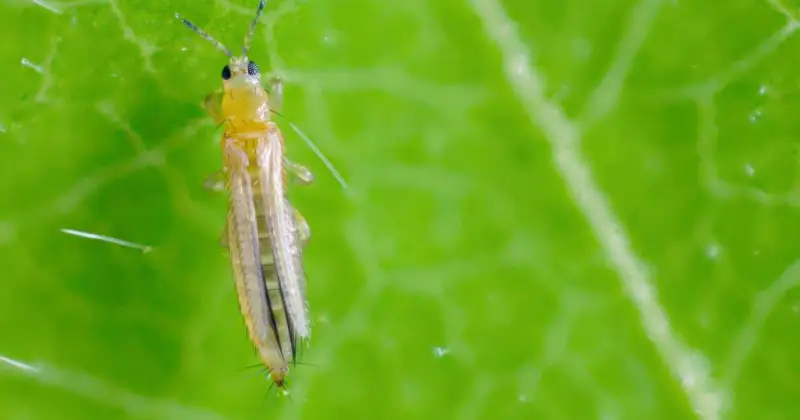
Organic Parasitic Nematodes (Garden Size, 10 million)
The ‘Organic Parasitic Nematodes (Garden Size, 10 million)’ provide a reliable solution for gardeners seeking a natural and environmentally conscious method of managing pests. These nematodes, specifically Heterohabditis bacteriophora, effectively target a variety of pests, including grubs, root zone weevils, and queen ants/termites.
Capable of treating up to 3,200 square feet, this product promotes a healthy garden environment. Notably, these nematodes pose no risk to mammals, aquatic species, birds, reptiles, or amphibians, maintaining a balanced ecosystem in your garden.
For a natural approach to pest control that prioritizes environmental safety, consider using Organic Parasitic Nematodes.
Ideal for: Gardeners who prioritize eco-friendly and effective pest management solutions.
Advantages:
- Harmless to mammals, aquatic species, birds, reptiles, and amphibians.
- Effective against various pests such as grubs, root zone weevils, and queen ants/termites.
- Can treat a large area of up to 3,200 square feet.
Limitations:
- Application is optimal only when the temperatures of the soil are between 42°F and 90°F.
By following a strategic timing and frequency plan, gardeners can maintain a strong defense against pests, ensuring their yards remain healthy and thriving with nematodes. This unique approach helps protect your thriving garden from encroaching pests and is quickly becoming in demand for the backyard gardening community. Check out the video below that details nematodes, how to apply them, and how to help them remain effective when deployed against pests.
Orcon Beneficial Nematodes (7 million nematodes) (GC-R7M)
The Orcon Beneficial Nematodes (7 million nematodes) (GC-R7M) provide a robust option when seeking an effective solution for managing various soil pests. These tiny, naturally occurring organisms, Steinernema feltiae, specialize in controlling more than 230 types of wood-boring and soil-dwelling pests.
These nematodes are compatible with other beneficial insects, such as ladybugs and lacewings, enhancing the overall health of your garden. You can apply them through topdressing, spraying, or injection methods, which are safe for your garden, pets, and the environment. 5
Results can be observed within 2 to 6 weeks, positioning Orcon Beneficial Nematodes as an essential tool for natural pest management.
Ideal For: Home gardeners seeking an effective, natural method to manage a broad spectrum of soil pests.
Advantages:
- Effective against a broad spectrum of pests.
- Harmless to humans, animals, and beneficial garden inhabitants.
- Results noticeable within a few weeks.
Limitations:
- Maximum shelf life of 3 months at room temperature.
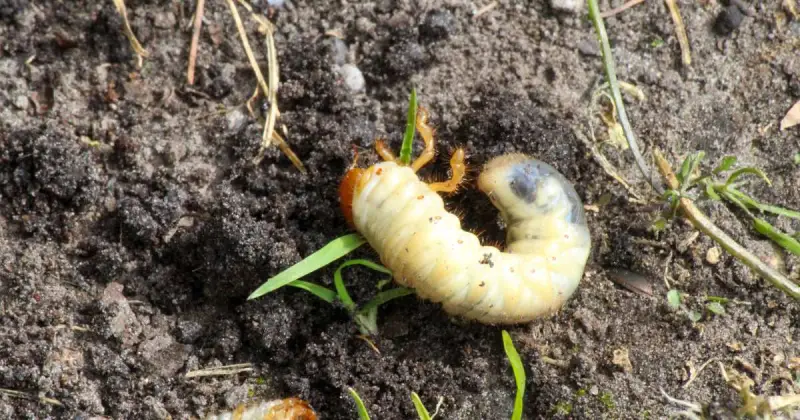
Nature’s Good Guys – Triple Blend Beneficial Nematodes HB+SC+SF (50 Million)
Explore the unique blend of beneficial nematodes in Nature’s Good Guys – Triple Blend, designed for eco-conscious gardeners who prefer natural methods for pest control. This product includes three types of nematodes: HB, SC, and SF, offering a robust solution for combating soil pests.
These nematodes are safe for use around animals, pets, and plants and target over 200 pest species. They provide live delivery and straightforward usage instructions, ensuring reliability in their pest control efficacy.
Feedback from users often commends the effectiveness of these nematodes against a variety of pests such as termites and fleas.
However, some reports have mentioned issues with the packaging, yet overall reviews confirm positive outcomes in pest management. Consider Natures Good Guys – Triple Blend if you’re seeking an organic and potent solution for managing garden pests.
Ideal For: Gardeners who prioritize organic and potent solutions for controlling soil pests.
Advantages:
- Targets over 200 pest species
- Harmless to animals, pets, and plants
- Guaranteed live delivery with easy-to-follow instructions
Disadvantages:
- Issues with packaging reported by some users

BioLogic Scanmask Beneficial Nematodes For Natural Insect Pest Control (5 Million Size)
If you need a reliable method to manage a range of pests, such as fleas, fungus gnats, and grubs, consider the BioLogic Scanmask Beneficial Nematodes. This product features Steinernema feltiae nematodes, which are effective in controlling over 230 different pests.
These nematodes are harmless to humans, animals, and plants and can be applied simply with a watering can, sprayer, or Nema-Jet sprayer. They cover up to 200 square feet and are ideal for garden or lawn treatment. Manufactured in the USA, the nematodes are delivered in a cooled, insulated box to ensure they arrive in excellent condition.
Many users have noted a significant decrease in pests, particularly with indoor use of the nematodes against fungus gnats. Despite this, some feedback indicates varying results depending on specific environmental factors, highlighting the importance of considering your particular situation when using this pest control method.
Ideal For: Individuals needing a natural, safe pest control option for their outdoor spaces.
Advantages:
- Capable of controlling a broad spectrum of over 230 pests including fleas, fungus gnats, and grubs.
- Harmless to people, animals, and vegetation.
- Simple application methods, including watering cans and sprayers.
Limitations:
- Variable effectiveness depending on environmental factors.
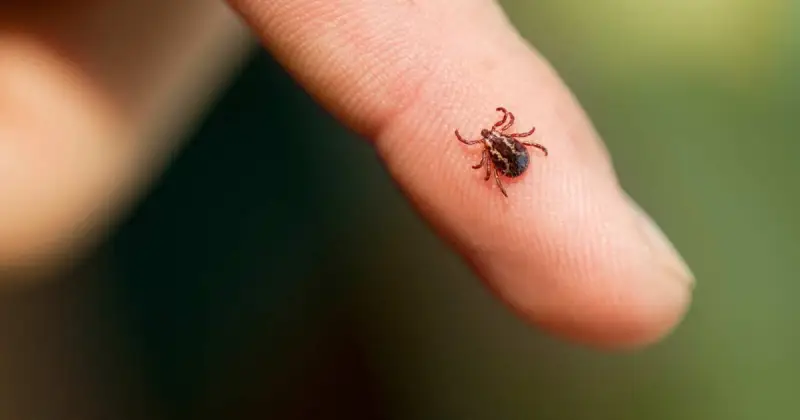
Common Mistakes To Avoid When Using Beneficial Nematodes
Application Missteps: Watering, Timing, And Soil Conditions
Effective use of beneficial nematodes requires attention to detail, especially regarding application methods, watering, and soil conditions. Common mistakes include applying nematodes during unsuitable weather conditions, such as when the soil is too dry or when temperatures are outside the optimal range for nematode activity.
Failing to water the grounds before and after applying nematodes can reduce their effectiveness, as nematodes need moist soil conditions to move and hunt pests. By adhering to best practices for application, watering, and considering soil conditions, gardeners can avoid these pitfalls and enhance the success rate of nematode-based pest control. 6
Ensuring the soil is adequately prepared before application, selecting the right time for application, and maintaining ideal soil moisture levels afterward are crucial steps for successful nematode usage.
These factors are necessary to maintain effectiveness and potentially save the effort and investment to acquire the nematodes. By avoiding these common mistakes, gardeners can fully leverage the benefits of beneficial nematodes, reducing pest populations and creating a healthier garden environment.
Expectation vs. Reality: Understanding The Nematodes’ Impact On Pest Control
Setting realistic expectations when using beneficial nematodes for pest control is essential for a satisfactory outcome. While nematodes can significantly reduce pest populations, they are not an instant solution and may not achieve 100% pest eradication.
The pest control impact of nematodes depends on various factors, including the initial pest population size, application timing, and environmental conditions. Understanding that it may take several weeks to observe noticeable results and that ongoing management may be necessary can help align expectations with the reality of biological pest control methods.
It is also important to appreciate the benefits of nematodes beyond immediate pest control. By contributing to the natural balance of the garden ecosystem and minimizing the need for chemical pesticides, nematodes support the overall health and resilience of the garden.
Managing expectations and recognizing the value of nematodes in a broader ecological context can enhance satisfaction with their use and encourage commitment to sustainable gardening practices. By embracing a realistic understanding of nematodes’ impact on pest control, gardeners can better appreciate their role in a comprehensive garden management strategy.
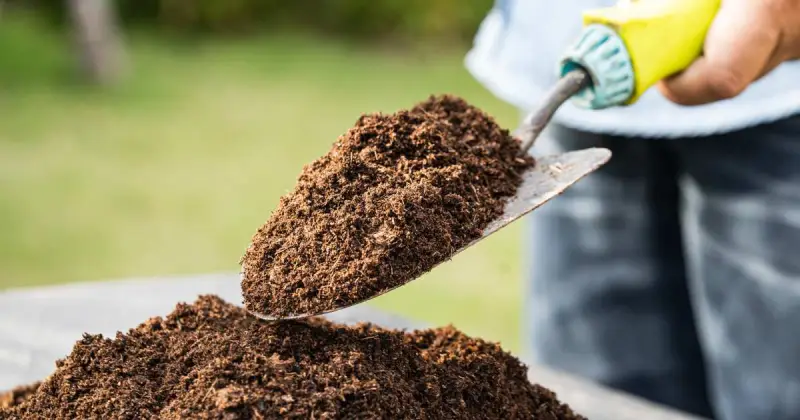
Maintaining A Healthy Environment For Nematodes In The Soil
Maintaining a healthy soil environment is crucial for beneficial nematodes to thrive and effectively control pests. This involves ensuring that the soil remains moist but not waterlogged, as extreme conditions can harm nematode survival.
Preserving nematode populations requires avoiding the use of chemical pesticides that can harm them. Incorporating organic matter into the soil can also benefit nematodes by improving soil structure and moisture retention, promoting a more conducive habitat for their activity. 7
Monitoring and adjusting soil conditions to favor nematode activity can significantly enhance their effectiveness in pest control. This includes mulching, which helps retain soil moisture and avoids compaction hindering nematode movement.
By creating and maintaining conditions that support the health and proliferation of beneficial nematodes, gardeners can establish a robust biological control system in their gardens. This reduces the reliance on chemical interventions and fosters a more sustainable and resilient gardening ecosystem.

Conclusion
Beneficial nematodes offer a practical and sustainable option for gardeners looking to control pests naturally. It’s impressive that each nematode can eliminate up to 230 insect pests during its lifespan, highlighting their popularity and efficiency in managing pest populations without harsh chemicals.
By carefully selecting and deploying the appropriate species, gardeners can maintain the health and beauty of their gardens in an environmentally friendly way. Consider using beneficial nematodes as your go-to solution for a greener, more vibrant garden.
Have you effectively used nematodes in your garden to help control damaging pests that seek to destroy your hard-earned efforts? We’d love to hear your story with this unique pest management strategy. Take a moment to drop us a line in the comment section below and give us the 411 on your success!
SOURCES
- Wikipedia – Nematode
- National Library Of Medicine, National Center For Biotechnology Information – Contribution Of Nematodes to The Structure And Function Of The Soil Food Web
- Nature, Scientific Reports – Nematodes Enhance Plant Growth And Nutrient Uptake Under C And N-Rich Conditions
- University Of Maryland, Extension – Beneficial Nematodes
- University Of New Hampshire, Extension – EPNs 101: An Introduction To Beneficial Nematodes
- The National Gardening Association, Learning Library – Beneficial Nematodes
- United States Department Of Agriculture – The Ins And Outs Of Beneficial Nematode Movement

